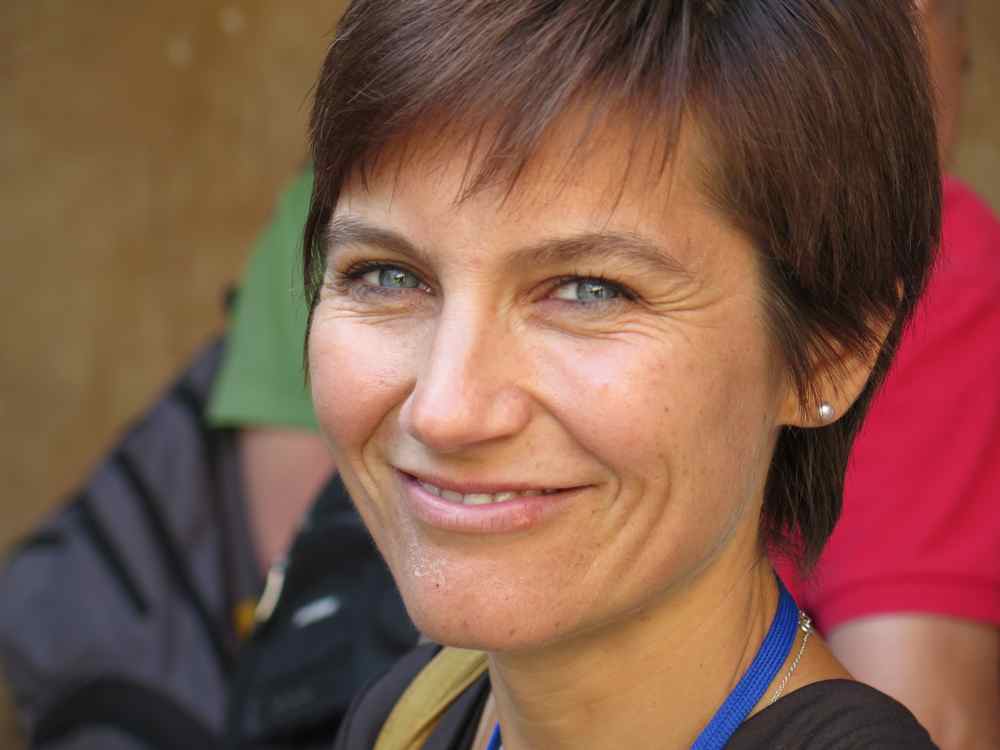Studying at the University of Verona
Here you can find information on the organisational aspects of the Programme, lecture timetables, learning activities and useful contact details for your time at the University, from enrolment to graduation.
Academic calendar
The academic calendar shows the deadlines and scheduled events that are relevant to students, teaching and technical-administrative staff of the University. Public holidays and University closures are also indicated. The academic year normally begins on 1 October each year and ends on 30 September of the following year.
Course calendar
The Academic Calendar sets out the degree programme lecture and exam timetables, as well as the relevant university closure dates..
| Period | From | To |
|---|---|---|
| I semestre | Oct 1, 2019 | Jan 31, 2020 |
| II semestre | Mar 2, 2020 | Jun 12, 2020 |
| Session | From | To |
|---|---|---|
| Sessione invernale d'esame | Feb 3, 2020 | Feb 28, 2020 |
| Sessione estiva d'esame | Jun 15, 2020 | Jul 31, 2020 |
| Sessione autunnale d'esame | Sep 1, 2020 | Sep 30, 2020 |
| Session | From | To |
|---|---|---|
| Sessione di laurea estiva | Jul 22, 2020 | Jul 22, 2020 |
| Sessione di laurea autunnale | Oct 14, 2020 | Oct 14, 2020 |
| Sessione di laurea invernale | Mar 16, 2021 | Mar 16, 2021 |
| Period | From | To |
|---|---|---|
| Festa di Ognissanti | Nov 1, 2019 | Nov 1, 2019 |
| Festa dell'Immacolata | Dec 8, 2019 | Dec 8, 2019 |
| Vacanze di Natale | Dec 23, 2019 | Jan 6, 2020 |
| Vacanze di Pasqua | Apr 10, 2020 | Apr 14, 2020 |
| Festa della Liberazione | Apr 25, 2020 | Apr 25, 2020 |
| Festa del lavoro | May 1, 2020 | May 1, 2020 |
| Festa del Santo Patrono | May 21, 2020 | May 21, 2020 |
| Festa della Repubblica | Jun 2, 2020 | Jun 2, 2020 |
| Vacanze estive | Aug 10, 2020 | Aug 23, 2020 |
Exam calendar
Exam dates and rounds are managed by the relevant Science and Engineering Teaching and Student Services Unit.
To view all the exam sessions available, please use the Exam dashboard on ESSE3.
If you forgot your login details or have problems logging in, please contact the relevant IT HelpDesk, or check the login details recovery web page.
Academic staff
 andrea.albiero@univr.it
andrea.albiero@univr.it
 maurizio.boscaini@univr.it
maurizio.boscaini@univr.it
 federico.busato@univr.it
federico.busato@univr.it

Cordoni Francesco Giuseppe
 francescogiuseppe.cordoni@univr.it
francescogiuseppe.cordoni@univr.it
 rosanna.laking@univr.it
rosanna.laking@univr.it
 franco.zivcovich@univr.it
franco.zivcovich@univr.it
Study Plan
The Study Plan includes all modules, teaching and learning activities that each student will need to undertake during their time at the University.
Please select your Study Plan based on your enrollment year.
1° Year
| Modules | Credits | TAF | SSD |
|---|
| Modules | Credits | TAF | SSD |
|---|
| Modules | Credits | TAF | SSD |
|---|
1 module between the following1 module between the following3 modules among the followingLegend | Type of training activity (TTA)
TAF (Type of Educational Activity) All courses and activities are classified into different types of educational activities, indicated by a letter.
Analytical mechanics (2019/2020)
Teaching code
4S001102
Teacher
Coordinator
Credits
6
Language
English
Scientific Disciplinary Sector (SSD)
MAT/07 - MATHEMATICAL PHYSICS
Period
II semestre dal Mar 2, 2020 al Jun 12, 2020.
Learning outcomes
The class is devoted to a modern study of classical mechanics from a mathematical point of view. The aim of the class is to introduce the tools and techniques of global and numerical analysis, differential geometry and dynamical systems to formalise a model of classical mechanics. At the end of the class a student should be able to construct a model of physical phenomena of mechanical type, write the equations of motion in Lagrangian and Hamiltonian form and analyse the dynamical aspects of the problem.
Program
• Introduction. At the beginning of the course we will quickly review some basic aspects of dynamical systems using the modern tools of differential geometry and global analysis. Vector fields on a manifolds, flow and conjugation of vector fields. First integrals, foliation of the phase space and reduction of order for a ODE. 1-dimensional mechanical systems.
• Newtonian mechanics. The structure of the Galilean space-time and the axioms of mechanics. Systems of particles: cardinal equations. Conservative force fields. Mass particle in a central field force and the problem of two bodies.
• Lagrangian mechanics on manifolds. Constrained systems: d’Alembert principle and Lagrange equations. Models of constraints and their equivalence. Invariance of Lagrange equations for change of coordinates. Jacobi integral. Stability theory for Lagrangian systems and small oscillations. Noether’s Theorem, conserved quantities and Routh’s reduction.
• Rigid bodies. Orthonormal basis, orthogonal and skew-symmetric matrices. Space and body frame: angular velocities. Cardinal equations in different reference frames. A model for rigid bodies. Euler’s equations.
Applications: the Foucault pendulum, the Kepler problem and the magnetic stabilisation.
• Symplectic manfolds and Hamiltonian dynamics. Hamilton equations, Poisson brackets. Noether’s Theorem from the Hamiltonian point of view.
Some qualitative numerical aspects will also been investigated. The course will also include seminars in geometric mechanics, geometric control theory and applications to robotics and surgical robotics.
| Author | Title | Publishing house | Year | ISBN | Notes |
|---|---|---|---|---|---|
| D.D. Holm, T. Schmah and C. Stoica | Geometric Mechanics and Symmetry: From Finite to Infinite Dimensions (Edizione 1) | Oxford University Press | 2009 | ||
| N. Sansonetto | Notes for the course of Analytical Mechanics | 2019 |
Examination Methods
To success in the exam, students must show that:
- they know and understand the fundamental concepts of Newtonian, Lagrangian and Hamiltonian mechanics;
- they have abilities in solving problems in mechanics, both from the abstract and the computational point of view
- they support their argumentation with mathematical rigor.
The exam is divided in two part: a written test based on the solution of open-form problems and an oral
test in which the student is required to discuss the written test and to answer some questions proposed
in open form. Only students who have passed the written exam will be admitted to the oral examination.
If positive, the mark obtained in the written test will be valid until the last session of the present
academic year (February 2021).
A student must obtain a mark of at least 18/30 (best) in both the written and oral part to pass the exam,
and the final grade will be given by the arithmetic average of the marks of the written and of the oral part.
Type D and Type F activities
| years | Modules | TAF | Teacher |
|---|---|---|---|
| 1° 2° | Python programming language | D |
Maurizio Boscaini
(Coordinator)
|
| 1° 2° | SageMath | F |
Zsuzsanna Liptak
(Coordinator)
|
| 1° 2° | History of Modern Physics 2 | D |
Francesca Monti
(Coordinator)
|
| 1° 2° | History and Didactics of Geology | D |
Guido Gonzato
(Coordinator)
|
| years | Modules | TAF | Teacher |
|---|---|---|---|
| 1° 2° | Advanced topics in financial engineering | D |
Luca Di Persio
(Coordinator)
|
| 1° 2° | C Programming Language | D |
Sara Migliorini
(Coordinator)
|
| 1° 2° | C++ Programming Language | D |
Federico Busato
(Coordinator)
|
| 1° 2° | LaTeX Language | D |
Enrico Gregorio
(Coordinator)
|
| years | Modules | TAF | Teacher |
|---|---|---|---|
| 1° 2° | Axiomatic set theory for mathematical practice | F |
Peter Michael Schuster
(Coordinator)
|
| 1° 2° | Corso Europrogettazione | D | Not yet assigned |
| 1° 2° | Corso online ARPM bootcamp | F | Not yet assigned |
| 1° 2° | ECMI modelling week | F | Not yet assigned |
| 1° 2° | ESA Summer of code in space (SOCIS) | F | Not yet assigned |
| 1° 2° | Google summer of code (GSOC) | F | Not yet assigned |
| 1° 2° | Higher Categories - Seminar course | F |
Lidia Angeleri
(Coordinator)
|
Career prospects
Module/Programme news
News for students
There you will find information, resources and services useful during your time at the University (Student’s exam record, your study plan on ESSE3, Distance Learning courses, university email account, office forms, administrative procedures, etc.). You can log into MyUnivr with your GIA login details: only in this way will you be able to receive notification of all the notices from your teachers and your secretariat via email and also via the Univr app.
Alternative learning activities
In order to make the study path more flexible, it is possible to request the substitution of some modules with others of the same course of study in Mathematics at the University of Verona (if the educational objectives of the modules to be substituted have already been achieved in the previous career), or with others of the course of study in Mathematics at the University of Trento.Documents
| Title | Info File |
|---|---|
|
|
pdf, it, 167 KB, 27/08/21 |
|
|
pdf, it, 97 KB, 29/07/24 |
|
|
pdf, it, 113 KB, 30/08/21 |
Attendance modes and venues
As stated in the Teaching Regulations , except for specific practical or lab activities, attendance is not mandatory. Regarding these activities, please see the web page of each module for information on the number of hours that must be attended on-site.
Part-time enrolment is permitted. Find out more on the Part-time enrolment possibilities page.
The course's teaching activities take place in the Science and Engineering area, which consists of the buildings of Ca‘ Vignal 1, Ca’ Vignal 2, Ca' Vignal 3 and Piramide, located in the Borgo Roma campus.
Lectures are held in the classrooms of Ca‘ Vignal 1, Ca’ Vignal 2 and Ca' Vignal 3, while practical exercises take place in the teaching laboratories dedicated to the various activities.
Career management
Student login and resources
Graduation
Deadlines and administrative fulfilments
For deadlines, administrative fulfilments and notices on graduation sessions, please refer to the Graduation Sessions - Science and Engineering service.
Need to activate a thesis internship
For thesis-related internships, it is not always necessary to activate an internship through the Internship Office. For further information, please consult the dedicated document, which can be found in the 'Documents' section of the Internships and work orientation - Science e Engineering service.
Final examination regulations
Upon completion of the Master’s degree dissertation students are awarded 32 CFU. The final examination consists of a written dissertation on a specific topic agreed with a supervising professor and presented to a commission (Dissertation Committee).
The dissertation can be high-level theoretical or experimental (in the latter case, it may focus on either basic or applied research), it can deal with a theoretical topic or propose the resolution of a specific problem, or description of a work project, and may be carried out at universities, research institutions, schools, laboratories and companies in the framework of internships, traineeships, study stays in Italy and abroad. The dissertation must be original and written by the student under the guidance of a Supervisor. At the request of the student, the dissertation may be written and presented in Italian.
Professors belonging to the Mathematics Teaching Committee, the Department of Computer Science, and any associated departments may be appointed as Supervisors, as well as any professors from the University of Verona whose area of interest (SSD - Scientific-disciplinary Sector) is included in the teaching regulations of the degree programme.
Students may take the final exam only if meeting all requirements set by the School of Sciences and Engineering.
The Master's degree in Mathematics is obtained by successfully passing the final examination and thus earning the 120 CFU included in the study plan.
The material submitted by the student for the final examination will be examined by the Dissertation Committee, which comprises three professors, possibly including the Supervisor, and appointed by the President of the Teaching Committee. The final examination will be assessed based on the following criteria: the student’s performance during the entire study programme, the knowledge acquired during the dissertation work, their understanding of the topic and autonomy of judgment, their ability to apply such knowledge, and communicate effectively and fully all the outcomes of the work and the main results obtained.
The final examination and the degree ceremony will be carried out, in one of the four graduation sessions throughout the academic year, by the Final Examination Committee appointed by the President of the Teaching Committee, and made up of a president and at least four members chosen from among the professors of the University.
For further information, please refer to the Final examination regulations.
Documents
| Title | Info File |
|---|---|
|
|
pdf, it, 31 KB, 02/11/22 |
|
|
pdf, en, 31 KB, 02/11/22 |
|
|
pdf, it, 171 KB, 20/03/24 |
List of thesis proposals
| theses proposals | Research area |
|---|---|
| Controllo di sistemi multiagente | Calculus of variations and optimal control; optimization - Hamilton-Jacobi theories, including dynamic programming |
| Controllo di sistemi multiagente | Calculus of variations and optimal control; optimization - Manifolds |
| Controllo di sistemi multiagente | Calculus of variations and optimal control; optimization - Optimality conditions |
| Formule di rappresentazione per gradienti generalizzati | Mathematics - Analysis |
| Formule di rappresentazione per gradienti generalizzati | Mathematics - Mathematics |
| Mathematics Bachelor and Master thesis titles | Various topics |

 +39 045 802 7913
+39 045 802 7913


























